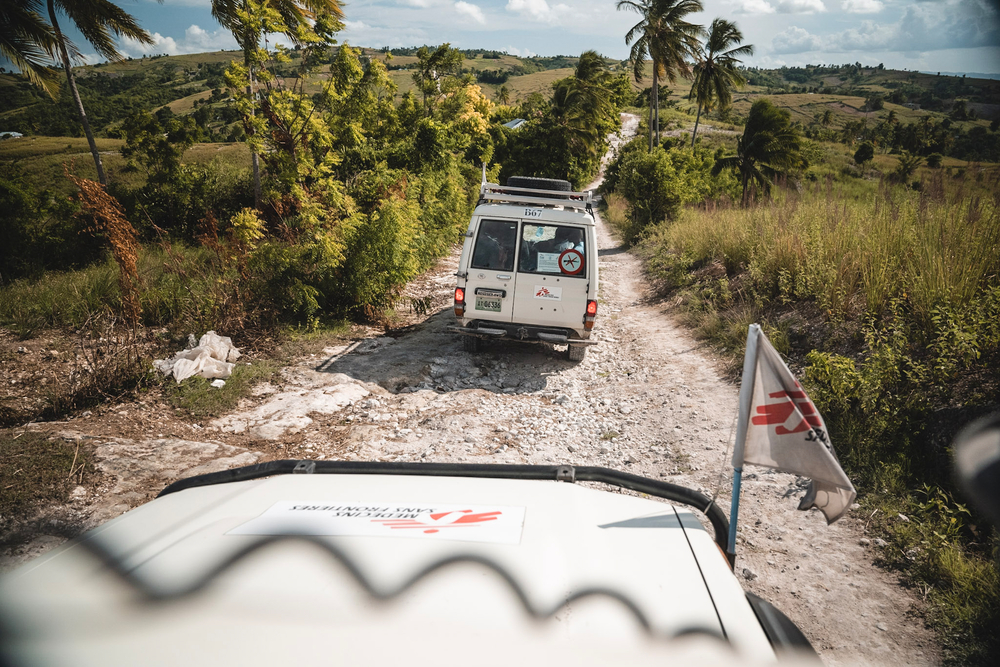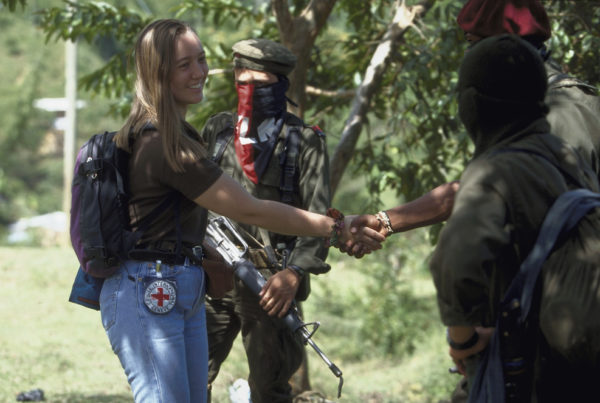
Operating in contexts affected by gang violence requires a strategic approach.
These contexts tend to be volatile, unpredictable and hard to access.
Violence can quickly move from one area to another or increase in intensity in the blink of an eye, putting a humanitarian operation at risk.
Gangs tend to be highly fragmented and fluid, making it hard to identify who is who, establish clear lines of communication and reach lasting agreements on the terms of a humanitarian operation.
Areas are hard to access because they are controlled by different—and often rival—gangs and borders between gangs’ territories are usually unknown to outsiders. Crossing these “invisible borders” can put local populations as well as humanitarians trying to assist them, at risk.
Here are the top six negotiation strategies shared by experienced humanitarians to effectively access and operate in gang-controlled areas.
1. Understand how gangs think and operate
Gangs are born out of communities’ efforts to fulfil their needs where the State has failed to meet them.
Members look to gangs for protection, survival and belonging, fuelled by poverty, exclusion and lack of opportunities.
Gangs proliferate in States with weak institutions where corruption and impunity are rife, which helps them achieve immense levels of social and territorial control.
These groups generally do not have political aims. Rather, they look to create the right environment for their illegal activities—for instance, by co-opting and colluding with local authorities.
As a humanitarian practitioner, developing an effective humanitarian response requires being aware of how gangs think and operate.
To do so, collect information about a gang’s territory, identity, and beliefs. Ask yourself: What logic guides their actions? What needs are they trying to meet? Who is connected to whom?
In the field, it is not always well regarded to name the maras (gangs), because saying “gang” is scary and saying “mara” offends, so it is preferable to talk about the “muchachos” [the guys], which is an accepted term.
— Humanitarian practitioner working in El Salvador
Try to understand the role of each actor, how the gang’s structure is formed, and how they relate to other actors within the community.
Gang violence is deeply embedded in communities and drawing the line between a gang or cartel member and people who aren’t involved in gangs can be difficult.
Which is why it’s important to…
2. Strengthen ties with the community
Once you have a basic understanding of how a gang operates, focus on building an ongoing and lasting relationship with the population you are assisting.
A close, working relationship with communities allows you to better understand their needs. In contexts affected by gang violence, specialists often speak of “invisible” humanitarian consequences such as a lack of access to education and healthcare. This is often due to the fact that people can’t move freely because they fear gang violence.
The pervasive insecurity can make communities suspicious of new organisations. If you are establishing your organisation’s presence in these contexts, make sure you have a communication plan in place and key messages ready to answer basic questions about its mission, scope and work.
Another strategy to build proximity is identifying the most respected individuals within the community. Who are its leaders? Whose opinions are trusted? Identify key people of influence who could be an initial point of contact to lend your organisation credibility within the community.
When reaching out for the first time, you might feel unsure about how and where to start a conversation. It’s important to find common ground with communities and define accordingly the talking points that will help you as a point of entry.
Once you have established your organisation’s presence in a community, you can move on to the next step…
3. Build trust with predictability, transparency and continuity
Making sure communities trust your organisation helps you assist them better and keep your team safe.
One of the main ways to build trust is by being predictable. Whenever possible, make sure you stick to your operational routines. For instance, enter a certain area on the scheduled day and at the agreed time, with the same driver and humanitarian team, using a vehicle with the same number plates and windows down (not tinted). Make sure your team also uses identification elements, such as a vest or apron with your organisation’s logo.
Whenever you can, plan activities in a transparent way. Bear in mind that someone connected to the gangs should be present to observe and listen when you present your plans. Then, make sure you conduct humanitarian activities openly in full view of the community, as far as possible in the form of an assembly.
Lastly, avoid high turnover of staff and provide continuity of interlocutors and communication. In the longer term, this will allow you to maintain access and deepen your understanding of communities’ needs, as well as of the evolving ways in which gangs operate.
Overall, building a relationship of trust will help not only your organisation’s access, but the humanitarian sector as a whole. Due to gang’s suspicion of unknown actors, an organisation’s access can be gained or impeded by another organisation’s previous behaviour.
4. Make sure you have psychological support
Continuity of staff and communication channels also means being exposed to violent environments in the long term, which can have lasting effects on your and your staff’s wellbeing.
Experiencing chronic pressure can affect your team’s decision-making, increase risk-taking and affect working relationships due to chronic stress.
Working in such an unpredictable environment can make it difficult to maintain focus, access solutions and creative thinking, and reduce your capacity to feel empathy or communicate effectively.
Whenever possible, seek out psychological support for you and your team. You can also increase your resilience by developing stress-management skills and self-care techniques.
5. Monitor and manage how your organisation is perceived
Experienced humanitarian practitioners shared that often, the more concrete and tangible the assistance is, the more positively it is perceived in territories controlled by gangs.
For instance, distributing food rations is generally welcomed because it is seen as directly benefiting the community. Educational programmes also tend to be well-valued because families see them as a possibility for social advancement.
However, gangs may not always respond well to operations around healthcare or protection because gang members fear these activities could expose them to being reported to the authorities if they attend a public hospital, for example.
Additionally, humanitarians recommend being mindful of the timing of a humanitarian intervention. For example, visiting a community shortly after the police has carried out an operation could be perceived as being associated with them, which could undermine trust in your organisation.
In these contexts, humanitarian operations can be developed thanks to the positive perception that gangs may have of the contributions that humanitarians make to the communities if they are useful and necessary for their well-being.
6. Exchange with other humanitarians
Imagine meeting other humanitarian professionals, from different organisations and contexts, and talking about your experiences working in areas controlled by gangs. You can do this by joining a Peer Workshop on Humanitarian Negotiation organised by us and participating the activities organised by our community of practice.
In 2023, we brought together over 40 humanitarian professionals who shared their insights on what it’s like to work and negotiate in environments where gangs are present.
Thanks to their experience, we captured and analysed their current negotiation practices that can provide guidance to other humanitarians.
This blog post is a summary of their recommendations. You can read the full version here.



